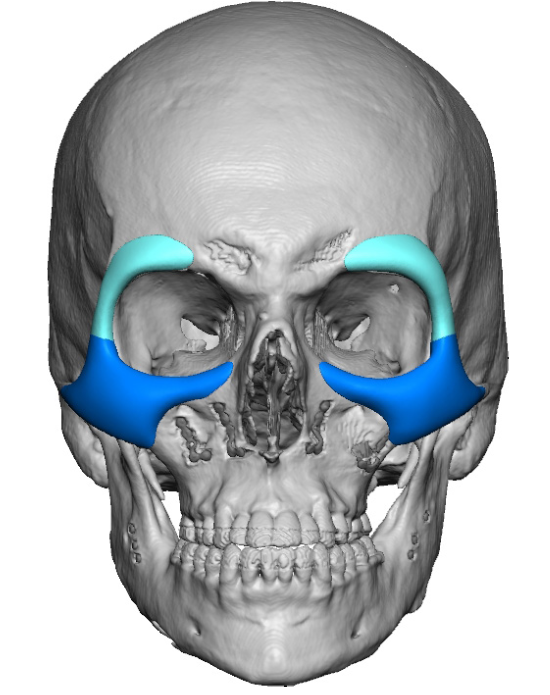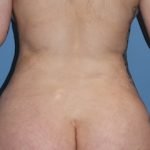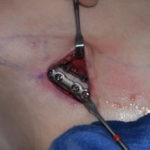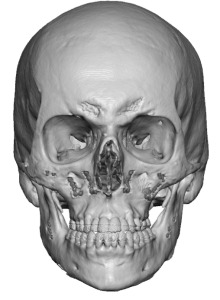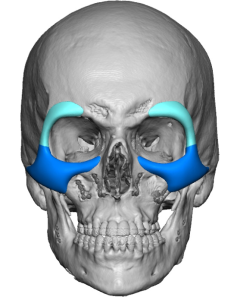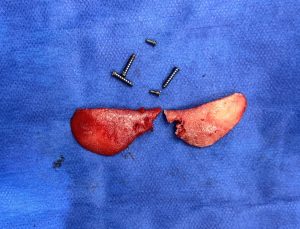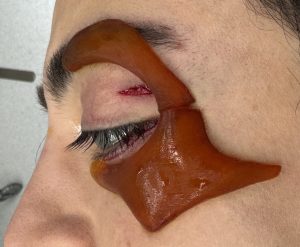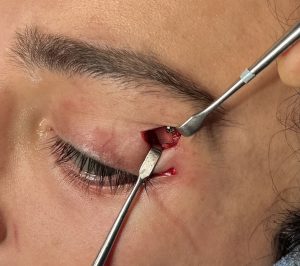Background
Two types of surgery often create a subsequent need for custom facial implants: facial feminization surgery (FFS) and double jaw surgery (DJS). DJS effectively repositions the lower midface and jaw, but significant forward movements can leave the upper midface behind, creating undereye hollowing and cheek deficiencies. These effects are magnified if preexisting midface deficiencies were already present. Custom infraorbital and infraorbital-malar implants are optimal for addressing these surgically induced concerns.
In FFS, one of the main procedures is brow bone reduction, often performed with a bone flap or Type III technique. The lateral (tail) portion of the brow bone is typically reduced by bone burring, softening a masculine appearance. However, a small percentage of patients later choose to de-transition and seek to remasculinize their face. In such cases, brow bone augmentation is required and is best accomplished with a custom implant.
Combining brow bone and infraorbital-malar implants allows for circumferential periorbital augmentation, particularly relevant for patients who have undergone both FFS and DJS. These implant designs are straightforward to create from a 3D CT scan, though accurate placement with limited incisional access can be technically challenging.
Patient Case

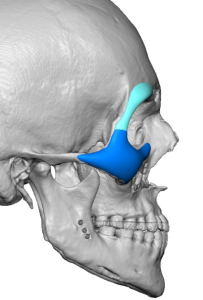
Surgical Approach
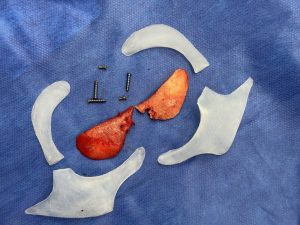
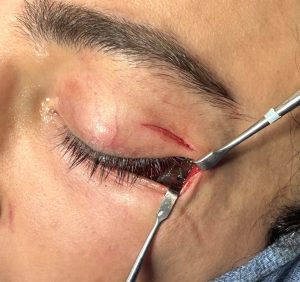
Technical Considerations
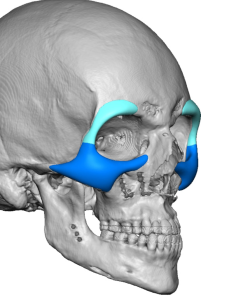
Accurate implant positioning is equally important. Infraorbital components, in particular, are best placed through a lower eyelid incision. Intraoral placement makes it difficult to position implants correctly over the infraorbital rim and carries risks of infraorbital nerve stretch injury, potentially causing temporary or permanent numbness. By contrast, the lower eyelid incision avoids these risks and ensures precise placement, despite leaving a fine scar.
Key Points
- Reversing FFS often requires augmentation of previously reduced bone areas, such as the brow bone and jaw.
- Custom implant designs, guided by 3D CT scans, are the most effective method for achieving FFS reversal.
- Custom implants also help the midface maintain balance following jaw advancements.
- Custom periorbital implants can be discreetly placed through eyelid incisions, ensuring accurate positioning and natural results.
Dr. Barry Eppley
World-Renowned Plastic Surgeon

